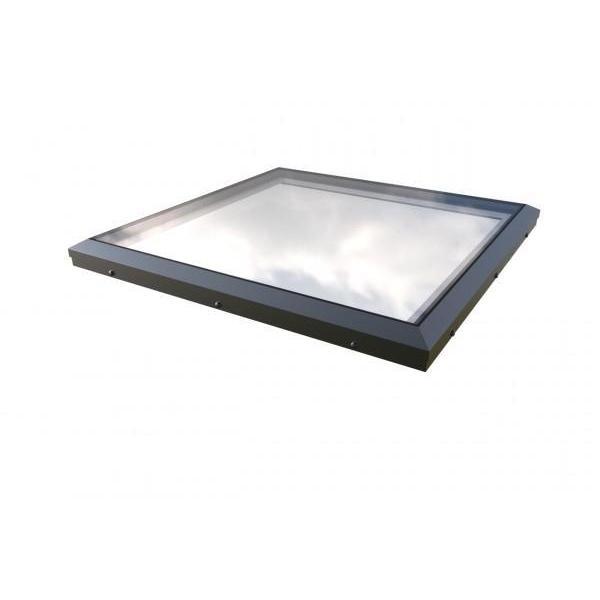One of the most common types of flat roof windows are fixed skylights which are considered to be the most leak-proof style around. They are also a cost effective option that help improve thermal efficiency (especially when double or triple glazed) while offering good levels of natural daylight into the space below. If you are considering installing this type of window, below we explain how to install a fixed skylight window for flat roofs.
Step one: Prepare the roof surface
First, create a clear outline of where the skylight is going to be positioned on the roof.
Step two: Cut the skylight shape into the roof
The required size needs to be cut into the ceiling, making sure to remove any wiring and insulation that is in place. Some ceilings may have rafters in place and these should be braced until the window is installed. Clear the roof material and use the appropriate tool to cut the desired hole.
Step three: Build a timber upstand
Create a timber upstand for the rooflight - the size will vary depending on the product but a height of 25mm minimum is a good rule of thumb – this can be increased if required. Ensure the internal dimensions of the upstand are the same as the internal dimensions of the skylight you are about to install.
Step four: Ensure the angle is correct
When installing a fixed skylight window for flat roofs it should also be pitched at 5 degrees to support water run-off. You can include this angle in the timber upstand if the roof does not have this angle already. To ensure better aesthetics, when building an angled upstand run the fall across the shorter side of the window, as it will stand out less.
Step five: Apply silicone
Add a good amount of silicone beading around the full frame of the upstand, approximately 20mm away from the inside edge. Some products may already come with tape that can be applied to the internal joint of the upstand instead.
Step six: Fix the skylight into position
The skylight can now be lowered down into position on-top of the frame, making sure it is evenly set on each side.
Step seven: Put screws into place
Screws can be positioned in the upstand. Use a drill to create pilot holes for the screw before fixing them into place. Position a minimum of 100mm from the corners and in the centre of the longer lengths. Some products may include pre-existing drill holes to make it easier to know where to place the screws.
Step eight: Lay down the membrane
The roof membrane/flashing needs to be sealed around the side of the window, making sure it us tucked into the drip overhang. The material will have to be cut to the right size when a torch is being used to seal the membrane, before folding it back and directing the heat onto the sheet away from the window. Once pre-heated it can be bonded into position.




